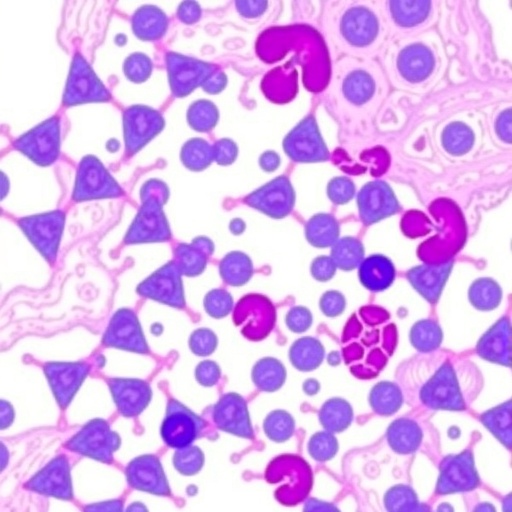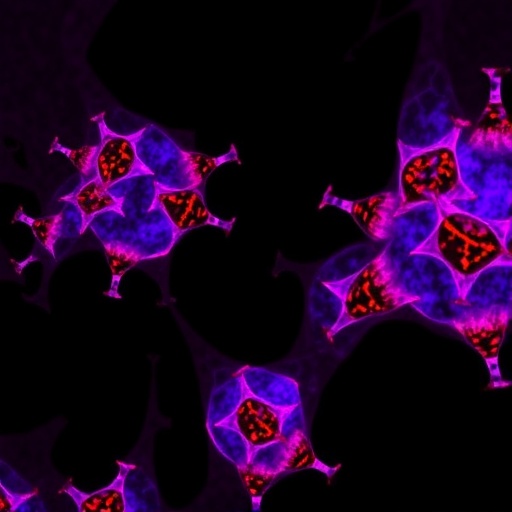In a groundbreaking advancement poised to revolutionize clinical oncology, researchers have unveiled a novel methodology that enables robust whole genome sequencing (WGS) analysis from formalin-fixed paraffin-embedded (FFPE) tissue specimens. This development promises to unlock a treasure trove of genomic data previously challenging to extract, thereby opening new horizons for personalized cancer therapy and precision medicine. The study, recently published in Nature Communications, meticulously addresses the long-standing technical barriers associated with FFPE samples, which are the most commonly stored biological materials in pathology.
FFPE tissues have historically been a mainstay in medical diagnostics, particularly in oncology, due to their excellent histological preservation and ease of storage. However, their chemical fixation process introduces significant technical complications for molecular analyses, especially for WGS. The formalin fixation leads to DNA fragmentation, cross-linking, and chemical modifications that degrade nucleic acid quality, complicating sequencing efforts. Until now, this has limited expansive genomic analyses primarily to fresh or frozen tissues, which are often not readily available in clinical workflows, thus limiting retrospective studies and the utility of vast FFPE archives.
The innovative approach articulated in this study overcomes the conventional pitfalls by implementing an optimized sequencing pipeline that enhances DNA extraction, library preparation, and bioinformatic processing tailored specifically for FFPE-derived material. At its core, the methodology incorporates refined DNA repair protocols that mitigate formalin-induced damage, coupled with enhanced enzymatic steps that improve library complexity and uniformity of coverage across the genome. Furthermore, advanced computational algorithms correct for FFPE-specific artifacts and ensure high fidelity variant calling, pushing the analytical quality near that of fresh-frozen counterparts.
This pioneering technique holds profound clinical implications. Whole genome sequencing offers an unbiased, comprehensive view of the cancer genome, detecting not only point mutations but also structural rearrangements, copy number alterations, and complex mutational signatures. With the ability to reliably perform WGS on FFPE specimens, clinicians and researchers can now access extensive retrospective cohorts of archival tumor material, accelerating biomarker discovery, therapeutic target identification, and unraveling tumor evolution dynamics in a manner previously constrained by sample quality.
The research team conducted extensive validation studies encompassing a diverse set of clinical FFPE samples from multiple cancer types, benchmarked against matched frozen tissues. The results demonstrated remarkable concordance in mutation detection rates, coverage uniformity, and structural variant identification, highlighting the robustness and reproducibility of the technique across pathological contexts. Importantly, the workflow exhibits scalable throughput and compatibility with standard clinical laboratory instrumentation, facilitating rapid integration into oncology diagnostics pipelines.
One of the key technical triumphs lies in addressing the challenges of PCR amplification bias inherent in fragmented FFPE DNA. The optimized library preparation protocols utilize unique molecular identifiers (UMIs) to tag individual DNA molecules prior to amplification. This strategy minimizes false positives caused by PCR duplicates and enables accurate molecular counting to quantify variant allele fractions sensitively. The study’s bioinformatics framework leverages UMI-aware algorithms to refine variant calling, markedly enhancing specificity without compromising sensitivity.
Beyond variant detection, the comprehensive genomic profiles generated from these FFPE specimens enable the delineation of mutational processes operative in tumorigenesis. Analyzing mutational signatures gleaned from high-quality WGS data allows researchers to infer carcinogenic exposures and DNA repair deficiencies that may inform clinical decision-making. This capability underscores the transformative potential of integrating WGS from FFPE samples into routine cancer management to guide therapeutic regimens tailored to each patient’s unique tumor biology.
The implications extend into clinical trial design as well, where archival FFPE specimens often represent the primary source material for biomarker stratification and correlative studies. The presented methodology affords investigators unprecedented access to rich genomic data sets from retrospective cohorts, enhancing biomarker validation and accelerating the discovery of novel predictive markers. This paves the way for more efficient trial designs with refined patient selection criteria based on comprehensive genomic profiling.
From a practical standpoint, the entire workflow is optimized for cost-effectiveness and turnaround time, carefully tailored to meet clinical laboratory standards. The streamlined DNA extraction and repair processes reduce sample input requirements, preserving precious archival materials. Moreover, the bioinformatic pipelines are implemented with high automation to facilitate rapid data processing and interpretation, aligning with the demands of clinical oncology settings where timely results are critical.
The study’s authors emphasize the importance of standardization and quality control in adopting FFPE-based WGS in clinical environments. They propose a set of benchmarking metrics and validation criteria to ensure consistent data quality across laboratories, addressing reproducibility, sensitivity thresholds, and reporting standards. This call for harmonization will be pivotal as more institutions consider integrating this powerful technology into cancer diagnostics and research.
Looking ahead, this innovation sets the stage for a paradigm shift in precision oncology by democratizing access to comprehensive genomic sequencing for the vast majority of clinical specimens. The ability to efficiently harness archival FFPE tissue repositories promises to catalyze discoveries linking genotype to phenotype, resistance mechanisms, and tumor heterogeneity. The data generated will empower clinicians to make better-informed therapeutic decisions, ultimately improving patient outcomes across cancer types.
Furthermore, the broader scientific community stands to benefit from this advancement given that FFPE samples constitute the most abundant human tissue resource worldwide. Large-scale cancer genomics projects can now incorporate FFPE-derived data sets, enriching public databases and enhancing the robustness of meta-analyses. This will facilitate the identification of rare driver mutations and complex genomic events previously underrepresented due to technical constraints.
The novel protocols detailed also open opportunities for integrating multi-omic analyses with FFPE samples, combining genomic data with transcriptomic and epigenomic profiling to provide a holistic molecular portrait of tumors. These integrative approaches promise to unveil deeper insights into tumor biology and uncover novel therapeutic vulnerabilities, underscoring the transformative impact of this technical leap in molecular pathology.
Ultimately, the development heralded by Domenico et al. signifies an important milestone in molecular oncology and diagnostic genomics. By surmounting the technical hurdles of FFPE tissue sequencing, it enables a new era of genomic medicine grounded in the extensive historical repositories of tissue samples available in virtually every pathology archive worldwide. This will accelerate both translational discoveries and personalized treatment strategies, representing a major step toward truly individualized cancer care.
This breakthrough aligns with broader initiatives to implement genomic medicine at scale in routine oncology practice. As sequencing costs continue to decline and bioinformatics capabilities expand, the ability to perform WGS reliably from FFPE samples ensures that nearly every cancer patient can benefit from comprehensive genomic insights irrespective of sample type. This democratization of cutting-edge molecular profiling is a critical enabler of precision oncology’s promise.
Such pioneering work exemplifies how innovative engineering and computational biology can unlock biological information long trapped within challenging specimen types. By bridging the gap between archived pathology material and next-generation sequencing technologies, these advances provide the clinical and scientific communities with powerful new tools to investigate cancer genetics comprehensively. The ripple effects will be felt across research, diagnostics, and patient care for years to come.
In summary, the methodology introduced for enabling whole genome sequencing analysis directly from FFPE specimens represents a transformative technological advance with wide-reaching implications for clinical oncology and cancer research. This work not only enhances the utility of the vast FFPE tissue repositories but also integrates seamlessly into clinical and research workflows, thereby accelerating precision medicine efforts and contributing to improved cancer diagnostics and therapeutics globally.
Subject of Research: Whole genome sequencing analysis of formalin-fixed paraffin-embedded (FFPE) specimens in clinical oncology.
Article Title: Enabling whole genome sequencing analysis from FFPE specimens in clinical oncology.
Article References:
Domenico, D., Gundem, G., Levine, M.F. et al. Enabling whole genome sequencing analysis from FFPE specimens in clinical oncology. Nat Commun 16, 10649 (2025). https://doi.org/10.1038/s41467-025-65654-7
Image Credits: AI Generated
DOI: https://doi.org/10.1038/s41467-025-65654-7
Tags: advancements in oncology researchbioinformatics in cancer genomicsclinical applications of enhanced WGS techniquesformalin-fixed paraffin-embedded tissue analysisimproving nucleic acid quality in sequencinginnovative sequencing methodologies in pathologyovercoming barriers in molecular analysispersonalized cancer therapy techniquesprecision medicine and genomic dataretrospective studies using archival tissuestechnical challenges in DNA extractionwhole genome sequencing from FFPE specimens





